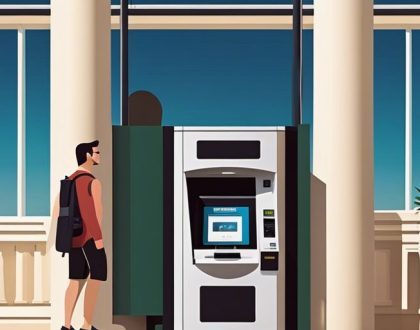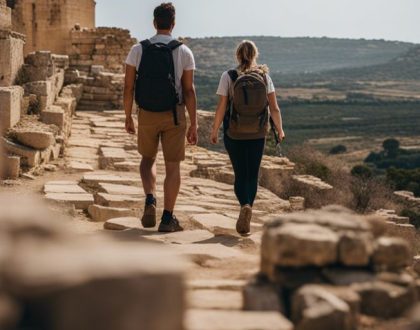Seeing Malta the Right Way

Many travelers flock to the picturesque island of Malta each year, drawn in by its breathtaking landscapes, rich history, and vibrant culture. However, navigating through this small but remarkable country requires careful planning and awareness of potential pitfalls. To ensure a smooth and enjoyable experience in Malta, it’s necessary to follow this handy tourist’s tutorial for seeing the island the right way.
Understanding Malta's Rich History
Before entering into the picturesque beaches and vibrant culture of modern-day Malta, it is necessary to grasp the intricate tapestry of its rich history. This small Mediterranean archipelago has been shaped by numerous civilizations, each leaving behind a unique imprint on the islands.
Prehistoric Temples and Ancient Ruins
With a history dating back over 7,000 years, Malta is home to some of the world’s oldest freestanding structures. The prehistoric temples of Ħaġar Qim, Mnajdra, and Ggantija are marvels of ancient architecture, showcasing the advanced engineering skills of the island’s early inhabitants. These UNESCO World Heritage sites offer a glimpse into Malta’s Neolithic past, where ritualistic practices and a deep connection to the mystical prevailed.
The Knights of St. John and the Legacy of the Great Siege
Prehistoric Malta set the stage for the later arrival of the Knights of St. John, a military order established in the 16th century to protect pilgrims traveling to the Holy Land. Their tenure on the island marked a significant chapter in Maltese history, culminating in the legendary Great Siege of Malta in 1565. Facing overwhelming odds, the Knights, aided by the local populace, repelled the Ottoman invasion after a grueling four-month siege.
This pivotal moment not only secured Malta’s place in history but also solidified the legacy of the Knights of St. John as valiant defenders of Christian Europe. The Great Siege remains a defining event in Maltese identity, with the courage and resilience displayed by its people serving as a testament to their unwavering spirit.
Essential Travel Information
Best Times to Visit
To make the most of your trip to Malta, it is crucial to consider the best times to visit. The peak tourist season in Malta is from June to August when the weather is hot and the beaches are crowded. If you prefer a more relaxed atmosphere and milder temperatures, consider visiting in the spring (April and May) or fall (September and October). During these months, you can still enjoy pleasant weather and fewer crowds, making it an ideal time to explore the islands.
Language and Communication
On the islands of Malta, both Maltese and English are recognized as official languages. English is widely spoken and understood, making it easy for tourists to communicate with locals. Signs, menus, and tourist information are also available in English, making it convenient for travelers to navigate the islands without any language barriers.
Best to learn a few basic Maltese phrases as well, such as “hello” (bonġu) and “thank you” (grazzi), as the locals appreciate the effort and it can enhance your overall travel experience.
Currency and Payment Methods
When traveling to Malta, the official currency used is the Euro (EUR). It is advisable to carry some cash for small purchases or in case you come across establishments that do not accept cards. Most hotels, restaurants, and shops in popular tourist areas do accept credit and debit cards, so you can rely on electronic payment methods as well.
On the smaller islands of Gozo and Comino, it is recommended to have some cash on hand as there may be limited ATM availability. Be aware of any foreign transaction fees that your bank may charge when using cards abroad.
Transportation Tips: Getting Around the Islands
Another important aspect of traveling in Malta is knowing how to get around the islands efficiently. Public transportation is a popular option, with buses being the main mode of transport. You can purchase a ExplorePlus Card for unlimited travel on buses and ferries, allowing you to visit various attractions without hassle.
- Plan your route: Before heading out, research the bus schedules and routes to optimize your travel time.
- Use bus stops: Look out for designated bus stops along the roads, as buses do not stop everywhere.
- Avoid rush hour: Public transportation can get crowded during peak hours, so plan your trips accordingly.
Language
Getting around the islands of Malta can be a breeze with the efficient public transportation system in place. The bus network covers most areas of the islands and is a cost-effective way to travel between towns and attractions.
- Check schedules: Bus schedules are available online and at bus stops, allowing you to plan your journeys in advance.
- Buy tickets: Tickets can be purchased from the driver when boarding the bus or at ticket machines located at busy hubs.
- Perceiving the culture: Observing how locals use public transportation can give you insights into Maltese daily life.
Getting
When using public transportation in Malta, be mindful of pickpockets, especially in crowded areas like bus stops or markets. Keep an eye on your belongings and secure your valuables to ensure a safe and enjoyable travel experience.
Planning Your Itinerary
Unlike larger European countries, Malta may seem tiny on a map, but it is packed with a rich tapestry of history, culture, and natural beauty waiting to be explored. Planning your itinerary meticulously is crucial to make the most of your visit to this charming archipelago in the heart of the Mediterranean Sea.
Must-See Destinations in Malta
With limited time on the islands, you’ll want to prioritize your visits to the must-see destinations in Malta. The capital city of Valletta is a UNESCO World Heritage Site and a treasure trove of Baroque architecture, museums, and historical sites. Don’t miss the impressive St. John’s Co-Cathedral and the grand Upper Barrakka Gardens offering panoramic views of the harbor. The ancient walled city of Mdina, also known as the “Silent City,” is another iconic spot that transports you back in time with its narrow alleys and medieval charm.
Hidden Gems: Exploring the Lesser-Known Spots
Your itinerary should also include exploring the hidden gems of Malta, the lesser-known spots that offer a more authentic and off-the-beaten-path experience. Discover the rugged beauty of Dingli Cliffs, where you can admire breathtaking views of the Mediterranean Sea from the highest point on the island. The quaint fishing village of Marsaxlokk is perfect for sampling fresh seafood at the local market and witnessing the traditional Luzzu boats bobbing in the picturesque harbor.
Your visit to Malta wouldn’t be complete without exploring the hidden gems that showcase the island’s unique character and charm. From the stunning Blue Grotto sea caves to the colorful fishing village of Popeye Village, there are countless surprises waiting to be uncovered off the typical tourist trail.
Tips for Scheduling Your Visits
Another vital aspect of planning your itinerary is scheduling your visits to ensure you make the most of your time on the islands. Consider these tips for scheduling your visits:
- Plan your visits to popular attractions early in the morning or late in the afternoon to avoid crowds.
- Be mindful of local opening hours, especially for churches and museums that may have limited schedules.
- Allocate enough time for transportation between destinations, as traffic can be congested during peak hours. Assume that Malta’s small size means you can cover a lot of ground in a short amount of time, but unforeseen delays can occur.
Day Trips to Gozo and Comino
A day trip to the sister islands of Gozo and Comino is a popular choice for visitors looking to explore beyond mainland Malta. Gozo, known for its rustic beauty and historic sites like the Citadella and the Azure Window (now collapsed), offers a tranquil escape from the hustle and bustle of everyday life. Comino, with its crystal-clear Blue Lagoon, is a paradise for snorkeling and sunbathing amidst stunning natural surroundings.
To make the most of your day trips to Gozo and Comino, consider joining organized tours that include transportation and activities. These tours provide a hassle-free way to experience the highlights of the sister islands while benefiting from the expertise of local guides who can enhance your experience with their knowledge and insights.
Planning Your Day Trips
A well-planned day trip to Gozo and Comino can be the highlight of your Malta itinerary, offering a chance to explore diverse landscapes and attractions in a single day. Make sure to schedule your visits to the main landmarks, such as the Ggantija Temples in Gozo and the Blue Lagoon in Comino, during optimal times to avoid crowds and make the most of your experience.
- Start your day early to catch the first ferry to Gozo and make the most of your time on the island.
- Bring plenty of water, sunscreen, and comfortable footwear for exploring the rocky terrain of Gozo and the sandy beaches of Comino.
- Plan your return journey carefully to avoid missing the last ferry back to mainland Malta. Assume that transportation schedules may vary depending on the season, so it’s vital to check timings in advance.
Cultural Insights
Despite being a small island nation, Malta boasts a rich and diverse culture influenced by centuries of history. From its ancient megalithic temples to its more recent Arab and European influences, Malta offers a unique blend of traditions and customs that are sure to fascinate any visitor.
Festivals and Events Not to Miss
With a calendar full of vibrant celebrations, there are several festivals and events in Malta that should not be missed. The most popular is the Feast of St. Peter and St. Paul, which takes place in late June and features colorful processions, fireworks, and traditional Maltese music and dance. Another highlight is the Malta International Fireworks Festival, held annually in Valletta, where pyrotechnic displays light up the night sky in a dazzling spectacle.
Understanding Maltese Cuisine
Maltese cuisine is a hearty and flavorful mix of Mediterranean and North African influences, with dishes that reflect the island’s history and geography. Fish and seafood are prominent features in Maltese cuisine, with dishes like lampuki pie (fish pie) and octopus stew being local favorites. Rabbit is another popular protein, often cooked in traditional dishes such as rabbit stew or fried rabbit.
Maltese cuisine is known for its bold flavors and unique ingredients, such as capers, olives, and local herbs like thyme and marjoram. The use of locally sourced, seasonal ingredients ensures that dishes are always fresh and bursting with flavor.
Local Etiquette and Customs
Cuisine plays a central role in Maltese culture, with meals often serving as a time for family and friends to come together and share stories. When dining in Malta, it is customary to try a bit of everything on your plate and to express your enjoyment of the meal to your host. It is also considered polite to bring a small gift, such as a bottle of wine or dessert, when invited to someone’s home for a meal.
The Maltese are known for their warm hospitality and generosity, so don’t be surprised if your host insists on serving you second helpings or refilling your glass throughout the meal.
Adventure and Recreation
Diving and Water Sports
All tourists looking for a thrilling adventure in Malta should consider diving and water sports. The crystal-clear waters surrounding the island provide the perfect playground for activities like scuba diving, snorkeling, jet skiing, and windsurfing. With numerous diving sites scattered around the coast, beginners and experienced divers alike can marvel at the underwater world filled with colorful marine life, caves, and shipwrecks.
Hiking and Nature Trails
Recreation enthusiasts will find solace in the diverse hiking and nature trails in Malta. The island’s rugged landscapes offer a mix of challenging terrains and scenic routes, catering to hikers of all levels. Traversing through valleys, cliffs, and historical sites, adventurers can immerse themselves in the natural beauty of Malta while staying active and healthy.
Sports lovers looking to add a dash of adrenaline to their vacation can opt for the various hiking and nature trails across Malta. From the stunning Dingli Cliffs to the picturesque countryside, hikers can explore the island’s hidden gems and breathtaking views while engaging in physical activity.
Nightlife and Entertainment
The vibrant nightlife scene in Malta is a must-experience for tourists seeking evening entertainment. From bustling nightclubs to cozy bars and live music venues, the island offers a plethora of options for all types of revelers. Whether you prefer dancing until dawn or sipping cocktails by the sea, Malta’s nightlife caters to diverse tastes and ensures a memorable night out.
For those looking to experience the best of Malta’s nightlife and entertainment, a visit to Paceville is a must. This lively district is known for its buzzing atmosphere, with a wide selection of bars, clubs, and restaurants to choose from. Tourists can indulge in a night of partying and socializing, making new friends and creating lasting memories.
Plus, remember to always prioritize safety when engaging in adventurous activities in Malta. Be sure to follow guidelines, use proper equipment, and consider weather conditions before setting out on your thrilling escapades. With the right precautions in place, you can fully enjoy the excitement and beauty that Malta has to offer.
Accommodation and Dining
Choosing Your Perfect Stay
Your accommodation while visiting Malta can greatly impact your overall experience. Whether you prefer a luxurious hotel with stunning sea views, a cozy guesthouse in a quaint village, or a budget-friendly hostel in the heart of the city, Malta offers a wide range of options to suit every traveler’s preferences. Be sure to research the different regions of Malta to find the location that best fits your itinerary and interests.
Best Dining Experiences for Every Budget
In terms of dining in Malta, you are in for a treat. From traditional Maltese restaurants serving hearty stews and fresh seafood to chic cafes offering international cuisine, there is something to satisfy every palate and budget. For a truly authentic experience, venture off the beaten path and explore the local food markets and family-run eateries that offer delicious dishes at affordable prices.
Perfect: Malta’s dining scene caters to all tastes and budgets, ensuring that you will never go hungry during your stay on the islands.
Food Safety and Dietary Tips
One: When dining in Malta, it is important to be aware of food safety practices and ensure that the establishments you visit maintain high standards of hygiene. To make the most of your dining experience, here are some tips to keep in mind:
- Avoid drinking tap water: Stick to bottled water to prevent any risk of water-borne illnesses.
- Try local specialties: Sample traditional Maltese dishes, but always inquire about ingredients if you have dietary restrictions.
Knowing these tips will help you enjoy the delicious flavors of Malta while staying safe and healthy.
To wrap up
With this in mind, it is clear that exploring Malta in the right way involves a balance of visiting popular tourist spots while also delving into the lesser-known gems that the island has to offer. By immersing oneself in the local culture, history, and traditions, visitors can truly appreciate the beauty and richness of Malta beyond its picturesque landscapes and crystal-clear waters. Following this tourist’s tutorial will ensure a more meaningful and memorable experience on the island.
FAQs
What are the must-see historical sites in Malta?
Some of the must-see historical sites in Malta include the prehistoric temples of Ħaġar Qim, Mnajdra, and Ggantija, as well as the capital city of Valletta with its St. John’s Co-Cathedral and Upper Barrakka Gardens.
When is the best time to visit Malta to avoid crowds?
The best times to visit Malta to avoid crowds are in the spring (April and May) or fall (September and October), when the weather is pleasant, and tourist numbers are lower.
How can I get around Malta efficiently?
Malta has a reliable public transportation system with buses and ferries. Purchasing an ExplorePlus Card allows unlimited travel, and planning routes in advance can save time.
What local foods should I try in Malta?
Local Maltese foods to try include lampuki pie (fish pie), rabbit stew, octopus stew, and other dishes featuring fresh seafood, capers, and local herbs.
What are some tips for a safe and enjoyable trip to Malta?
To ensure a safe and enjoyable trip to Malta, plan visits during off-peak times, carry some cash for small purchases, use public transport wisely, and be aware of pickpockets in crowded areas.
Recommended Posts

Banking in Malta – A Guide for Expats
July 3, 2024

Best Hiking and Walking Tours in Malta
July 3, 2024

Malta’s Business Framework: Tax, Finance
July 3, 2024




